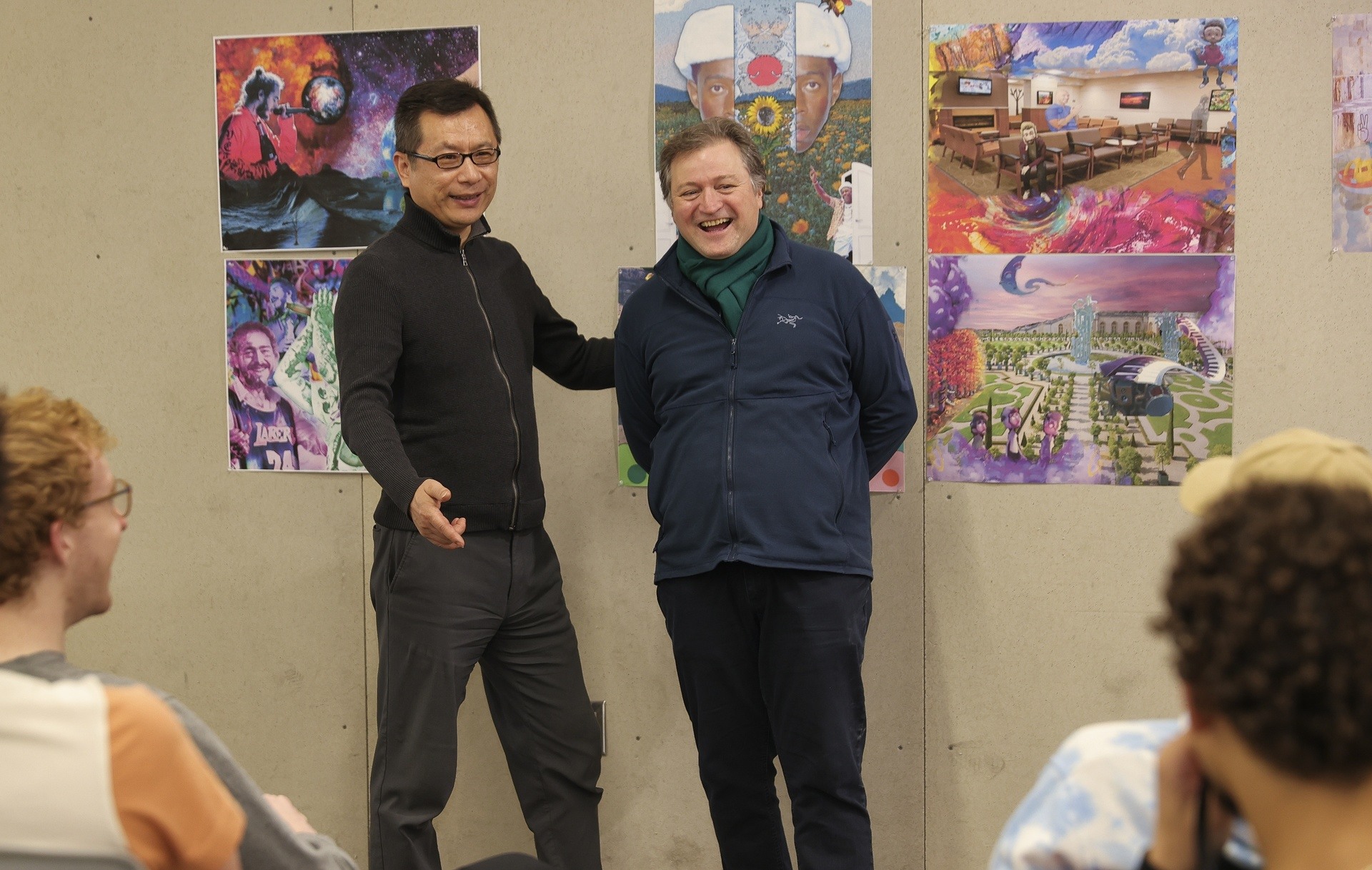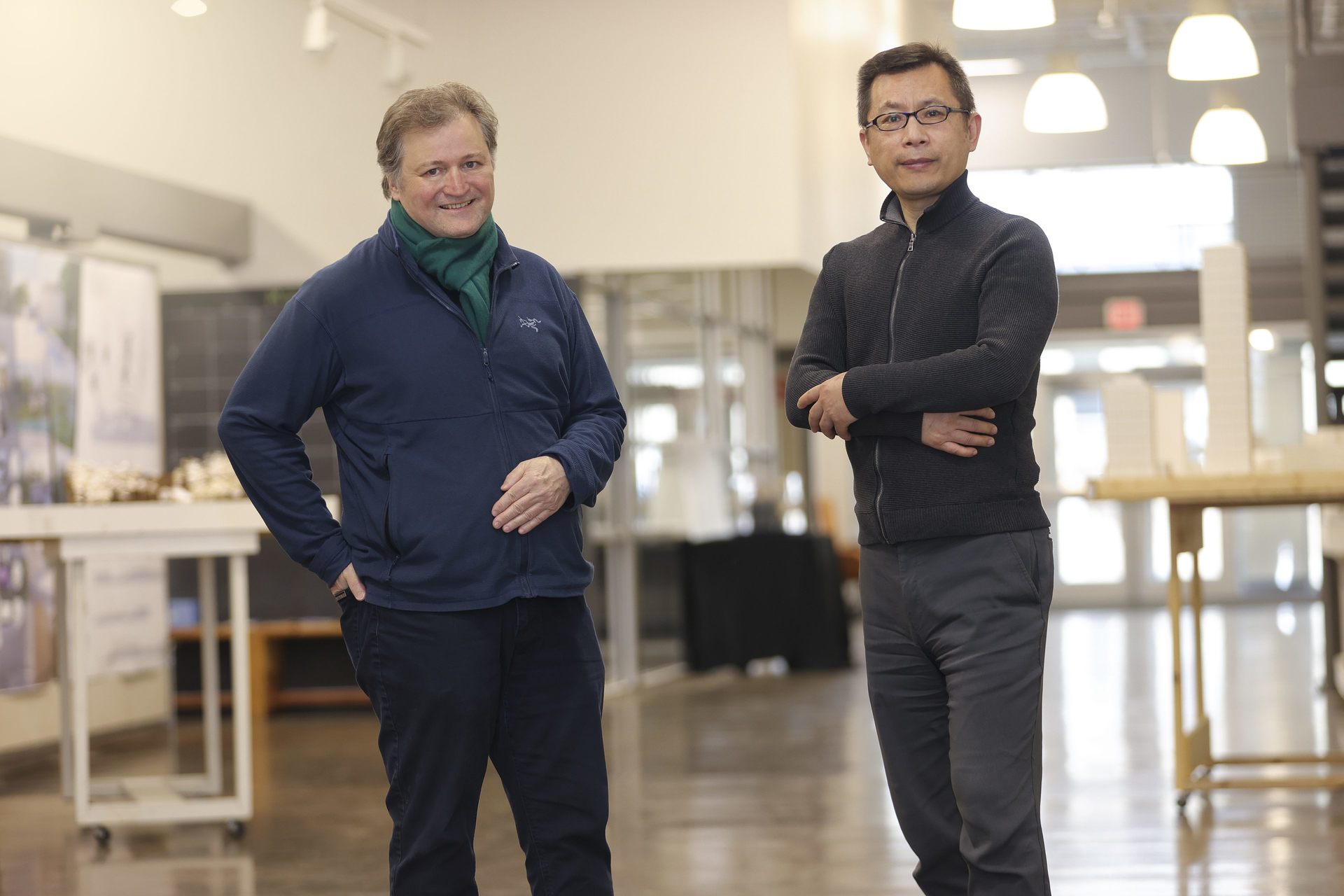
Can architecture impact climate change? BGSU course receives national recognition for exploring Urban Heat Islands
Dr. Andreas Luescher and Yong Huang receive 2022 Course Development Prize in Architecture, Climate Change and Society

By: Nick Piotrowicz
The issues that cities will face as a result of climate change are complex, multi-layered and will require collaborative solutions — so two Bowling Green State University researchers have designed an award-winning course that aims to expose students to innovative, big-picture thinking as part of their studio experience at BGSU.
BGSU professor Dr. Andreas Luescher and assistant professor Yong Huang won a 2022 Course Development Prize in Architecture, Climate Change and Society, awarded by the Association of Collegiate Schools of Architecture and Columbia University’s Temple Hoyne Buell Center for outside-the-box thinking in architecture education that addresses climate change.
The two faculty members in the BGSU College of Technology, Architecture and Applied Engineering collaborated with University of Toledo professor Dr. Sujata Shetty to come up with a course entitled, “Acclimatizing to Heat in a Legacy City: Urban Heat Islands, Segregation and Social Connections in Toledo, Ohio.”
Urban Heat Islands (UHIs) are areas of concentrated heat within cities that are most likely to be affected by warming temperatures, and they disproportionately impact low-income and minority citizens.
Mitigating their impact is at the center of the course, which merges multiple ideas, strategies and academic areas of study to examine a problem that goes beyond just climate change.
“The Urban Heat Island is just one concept, a single problem, but it’s actually a complex set of issues,” Huang said. “It’s like peeling an onion: The more you peel, the more you discover the issues.”
A collaborative approach
In the spirit of collaboration, the course will bring together students from both Bowling Green State University and the University of Toledo. Students in the BGSU architecture program and students taking geography and urban planning courses at Toledo will combine to take the studio, which is planned for fall semester 2022.
Luescher specializes in architectural design processes in relation to urbanism, while Huang’s research speciality has been the transformation of public spaces. Shetty is the director of the Urban Affairs Center at UT, with all three researchers bringing something new to the course.
Though unconventional for college classwork, the three researchers operated with the thought that a complex problem deserves creative ideas from academia.
“To solve these problems, you have to have a collaborative way of thinking,” Luescher said. “What the students will learn is how to think in teams to address complex problems, that small solutions can have major impacts and they’ll also learn planning and design tools. So, if you add more trees, what will this affect? If you change the building or zoning code, what does that affect? How would adding a bike path improve the way we live and therefore reduce climate change?
“We look at different scenarios to add to their ‘toolbox’ for their careers, and hopefully some of this will be adopted by planning commissions.”
A global issue
The issue of UHIs is not unique to Toledo, but as a legacy city that has declined in population, it presents an interesting case study for the course, which will take students through the process of understanding an issue on a micro level and expanding to bigger areas in districts, states, regions and even nationally or internationally.
“From the design point of view, we’re always talking about starting from a point,” Huang said. “Then we connect the dots into lines, then from the lines we can expand to an area. To work on logical skills is really our approach, and the students are learning something beyond the traditional architecture projects.”
Luescher said viewing the big picture will be imperative in dealing with climate change.
Severe weather events can have major effects on everything from infrastructure to food production to health, so finding innovative heat-mitigation strategies will be at a premium in multiple disciplines, including architecture and city planning.
“I think people have some understanding, but we don’t all see the big picture yet,” Luescher said. “It’s severe in a sense because it has to do with extreme weather, so we will see flooding, we will see droughts and we will see storms, and these have major impacts on infrastructure, on housing, on human livelihoods and health. That’s not just a Toledo problem, it’s a universal problem.”
By including many different disciplines that go beyond architecture, Huang and Luescher believe students will gain new skills, but also new ways of approaching a problem.
For an issue as complex as UHIs, drawing on multiple perspectives will be a must.
“First, students have to learn how to analyze the Urban Heat Island situation from broader perspectives,” Huang said. “The collaboration between architecture, urban planning and urbanism is quite important. Most of our students are architecture majors, so this kind of studio course can widen their views and help them see the problem from different perspectives.”
Related Stories
Media Contact | Michael Bratton | mbratto@bgsu.edu | 419-372-6349
Updated: 04/08/2022 02:46PM




